The Chardham Yatra Package is one of the most revered spiritual journeys in India, drawing thousands of devotees every year to the lap of the mighty Himalayas. This sacred pilgrimage, deeply rooted in faith and tradition, takes pilgrims to four holy abodes — Yamunotri, Gangotri, Kedarnath, and Badrinath — each nestled in the pristine mountains of Uttarakhand. More than just a physical journey, the Char Dham Yatra is a transformative experience that blends devotion, nature, and self-discovery.
For many, embarking on this yatra is a lifelong dream. However, the remote locations, challenging terrain, and unpredictable weather can make independent travel difficult. That’s where a well-planned Char Dham Yatra package comes in. Whether you’re seeking a budget-friendly option, a family-friendly itinerary, or a luxury spiritual retreat, there’s a package designed to suit your needs and ensure a safe, seamless, and deeply meaningful journey.
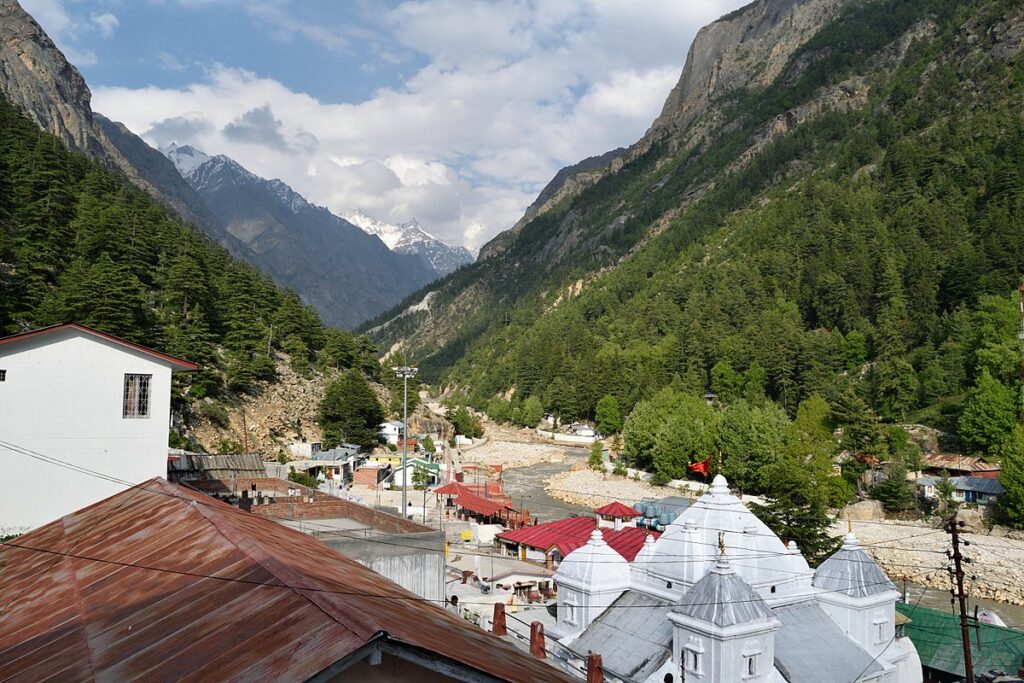
In this comprehensive guide, we’ll explore every aspect of the Char Dham Yatra, from its rich history and spiritual significance to practical details like how to reach each destination, where to stay, the best time to visit, and what to pack. We’ll also include a detailed FAQ section, a list of must-visit places, and essential tips to help you make the most of your pilgrimage.
What is the Chardham Yatra Package?
The term “Char Dham” translates to “four abodes,” referring to four sacred pilgrimage sites located in the Garhwal region of Uttarakhand. These sites are:
- Yamunotri – The source of the Yamuna River and dedicated to Goddess Yamuna.
- Gangotri – The origin of the Ganges River, considered the holiest river in Hinduism.
- Kedarnath – One of the twelve Jyotirlingas, dedicated to Lord Shiva.
- Badrinath – A major Vaishnavite temple dedicated to Lord Vishnu.
Together, these four temples form a circuit that is believed to cleanse the soul of sins and help attain moksha (liberation from the cycle of rebirth). The yatra typically begins with Yamunotri, followed by Gangotri, then Kedarnath, and concludes at Badrinath, though the order can vary based on personal or regional traditions.
The journey covers approximately 1,200 kilometers and takes between 10 to 16 days, depending on the pace, mode of travel, and stops along the way. While physically demanding, the yatra is open to pilgrims of all ages, with various travel options — including trekking, helicopter services, and road transport — making it accessible to a wide range of travelers.
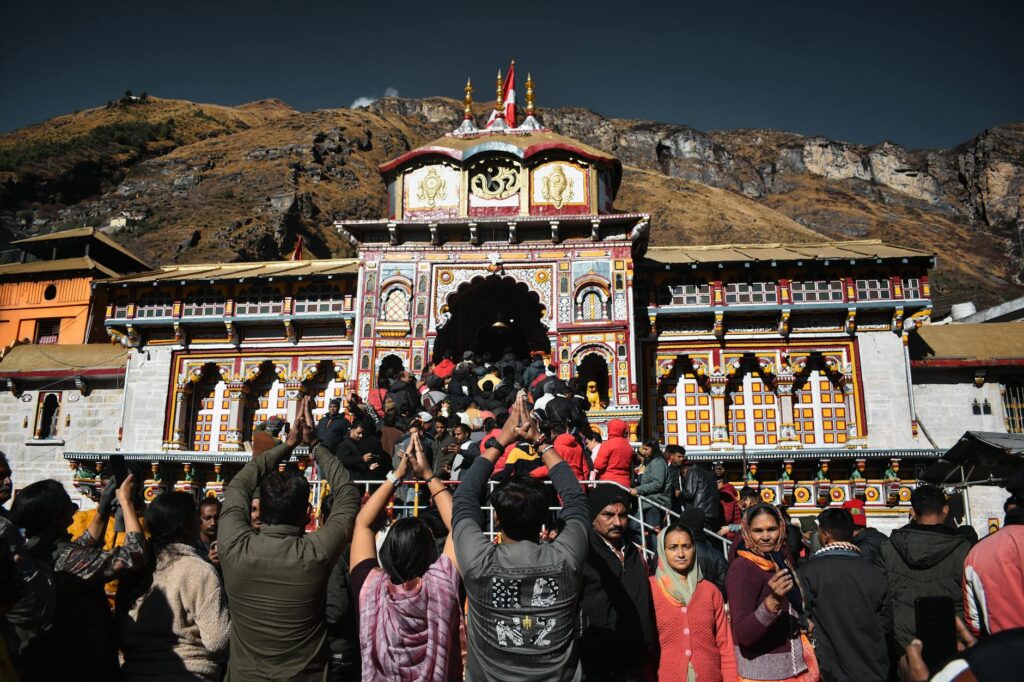
The Spiritual and Historical Significance of the Char Dham
The Char Dham Yatra holds a central place in Hindu spirituality and is believed to have been established by the great philosopher and saint Adi Shankaracharya in the 8th century. He is said to have revived the worship of these four temples to unify the country spiritually and promote the philosophy of Advaita Vedanta — the non-dual nature of the soul and the ultimate reality (Brahman).
Each of the four sites represents a different aspect of life and liberation:
- Yamunotri symbolizes purity and the beginning of life.
- Gangotri represents purification and the flow of divine grace.
- Kedarnath signifies destruction of ego and spiritual transformation.
- Badrinath embodies devotion, knowledge, and ultimate salvation.
According to Hindu scriptures, visiting all four Dhams in one lifetime washes away the sins of past lives and paves the way for spiritual enlightenment. The journey is often undertaken as an act of penance, gratitude, or fulfillment of a vow made to the divine.
The temples themselves are steeped in mythology. Yamunotri is believed to be where the river Yamuna descended from heaven, while Gangotri marks the spot where the Ganga was brought down to Earth by the power of Lord Shiva’s hair. Kedarnath is linked to the Pandavas from the Mahabharata, who sought Lord Shiva’s blessings here after the Kurukshetra war. Badrinath is said to be where Lord Vishnu meditated in the form of a young boy under a Badri tree, giving the place its name.
Over the centuries, the Char Dham has become a symbol of India’s spiritual heritage, attracting not only devout Hindus but also spiritual seekers, nature lovers, and adventure travelers from around the world.
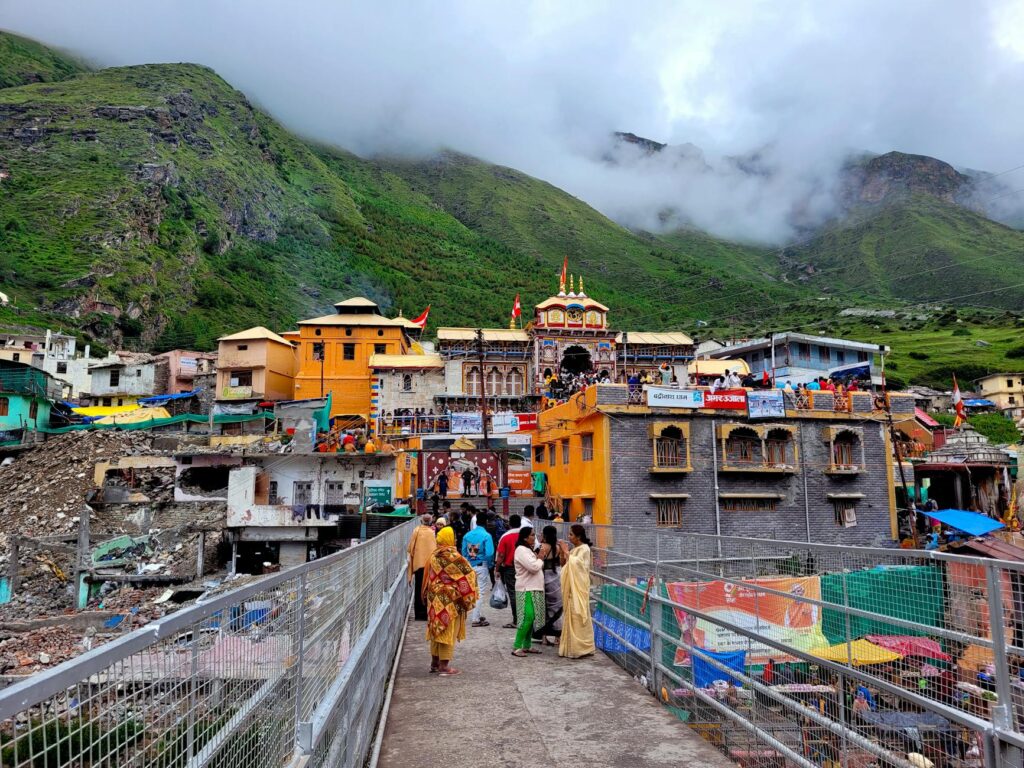
Why Choose a Char Dham Yatra Package?
While it’s possible to plan the yatra independently, booking a Char Dham Yatra package offers numerous advantages that make the journey smoother, safer, and more enjoyable.
1. Hassle-Free Planning
Organizing transportation, accommodations, permits, and meals across four remote locations can be overwhelming. A good package handles all the logistics, from your arrival in Haridwar or Rishikesh to your return, allowing you to focus on the spiritual aspects of the journey.
2. Expert Guidance
Most packages include experienced guides who are familiar with the terrain, rituals, and local customs. They can help you navigate the treks, explain the significance of each site, and ensure you follow proper etiquette at the temples.
3. Safety and Support
The Himalayan terrain can be unpredictable, with risks of landslides, sudden weather changes, and altitude-related issues. Reputable tour operators provide emergency support, medical assistance, and real-time updates on road conditions, ensuring your safety throughout the trip.
4. Flexible Options
Whether you’re a senior citizen, a solo traveler, or traveling with family, there are packages tailored to different needs. You can choose from:
- Budget packages with basic accommodations and shared transport.
- Deluxe packages with comfortable hotels and private vehicles.
- Luxury packages offering premium stays, helicopter rides, and personalized services.
- Trek-friendly packages with ponies, palanquins, or porter support.
5. Time and Cost Efficiency
Booking a package often saves money compared to arranging everything individually. Early bookings also come with discounts, and having a fixed itinerary helps avoid last-minute expenses.
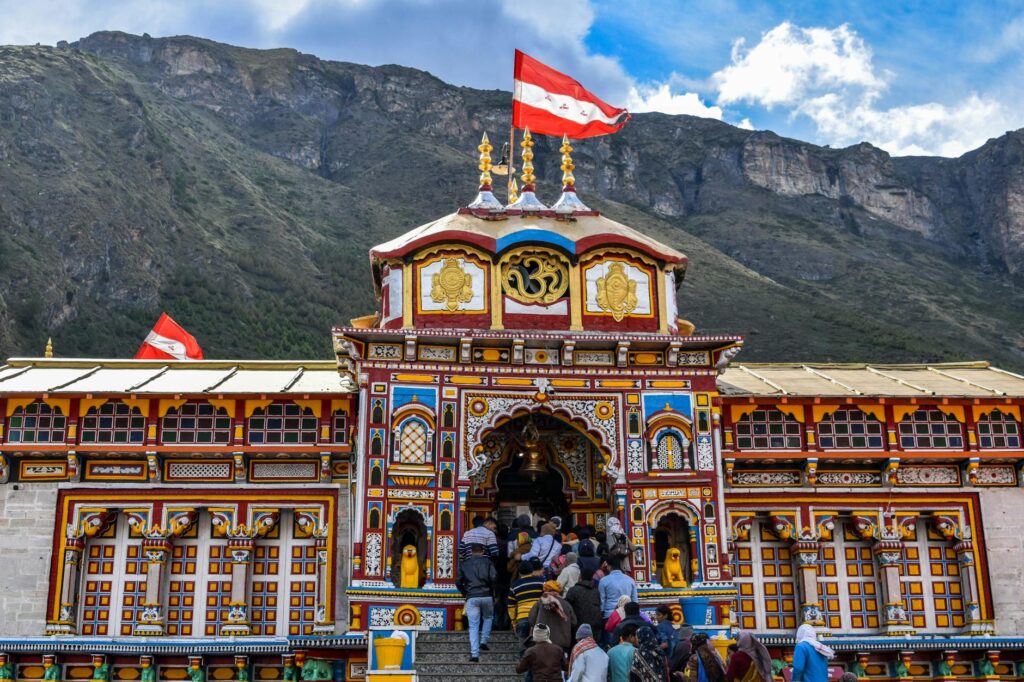
6. Inclusion of Key Attractions
Most Char Dham tour packages include visits to important landmarks along the way, such as:
- Gaurikund (starting point of the Kedarnath trek)
- Sonprayag (gateway to Kedarnath)
- Guptkashi (home to ancient Shiva temples)
- Chorabari Tal (a glacial lake near Kedarnath)
- Mana Village (the last village before the Tibet border, near Badrinath)
These stops enrich the journey with cultural, historical, and natural experiences.
The Four Dhams: A Detailed Look
Let’s explore each of the four sacred sites in detail.
1. Yamunotri – The Source of the Yamuna
Location: Uttarkashi district, Uttarakhand
Altitude: 3,293 meters above sea level
Deity: Goddess Yamuna
Yamunotri is the first stop on the Char Dham circuit and the source of the Yamuna River, one of India’s major rivers. The temple is located in a picturesque valley surrounded by snow-capped peaks and dense forests. The actual source of the river, known as Yamunotri Glacier or Champasar Glacier, lies about 1 kilometer from the temple.
The Yamunotri Temple is dedicated to the goddess Yamuna, sister of Yama, the god of death. It is believed that bathing in the river absolves one of sins and protects against untimely death.
Key Highlights:
- Janki Chatti: A hot water spring where pilgrims cook rice and potatoes as an offering.
- Divya Shila: A sacred rock formation near the temple where offerings are made before entering.
- Surya Kund: A thermal spring used for cooking prasad; the high altitude causes water to boil at a lower temperature.
Trek Details: The final 6 kilometers to the temple from Hanuman Chatti is a moderate trek, but ponies and palanquins are available for those who cannot walk.
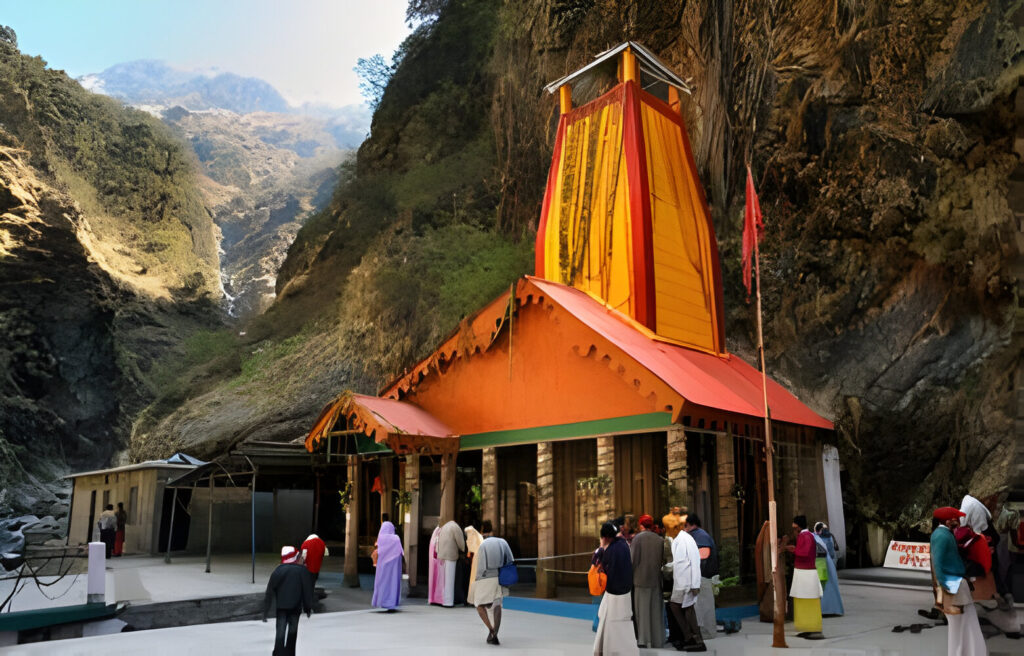
2. Gangotri – The Origin of the Ganges
Location: Uttarkashi district, Uttarakhand
Altitude: 3,100 meters above sea level
Deity: Goddess Ganga
Gangotri is where the holy Ganges River descends from the Gaumukh Glacier, located about 18 kilometers away. The Gangotri Temple, built in the 18th century, is dedicated to Goddess Ganga, who is believed to have come to Earth to purify humanity.
The town is surrounded by towering peaks, including Bhagirathi, named after the king who brought the Ganga down to Earth.
Key Highlights:
- Gaumukh Trek: A 18-kilometer trek (one way) from Gangotri to the glacier, considered highly auspicious.
- Pandava Gufa: A cave where the Pandavas are said to have meditated.
- Nag Tibba: A nearby peak offering panoramic views.
- Tapovan: A serene meadow with views of the Shivling peak, popular among trekkers and meditators.
Spiritual Significance: Taking a dip in the icy waters of the Ganges at Gangotri is believed to cleanse the soul and bring blessings from the goddess.

3. Kedarnath – The Abode of Lord Shiva
Location: Rudraprayag district, Uttarakhand
Altitude: 3,583 meters above sea level
Deity: Lord Shiva
Kedarnath is one of the twelve Jyotirlingas and one of the most powerful Shiva temples in India. The temple is believed to have been built by the Pandavas and is surrounded by the majestic Kedarnath range.
The journey to Kedarnath is both physically and spiritually challenging. The final 14 kilometers from Gaurikund is a steep trek, though helicopter services are available from Jolly Grant Airport or Sonprayag.
Key Highlights:
- Gaurikund: The starting point of the trek, believed to be where Goddess Parvati meditated to win Shiva’s heart.
- Chorabari Tal (Kedarnath Lake): A glacial lake about 3 kilometers from the temple, said to be the bathing place of Lord Shiva.
- Bhairavnath Temple: Located just 1 kilometer from Kedarnath, this temple is dedicated to a fierce form of Shiva.
Spiritual Significance: Darshan at Kedarnath is believed to grant moksha and destroy sins. The temple remains closed during winter due to heavy snowfall.
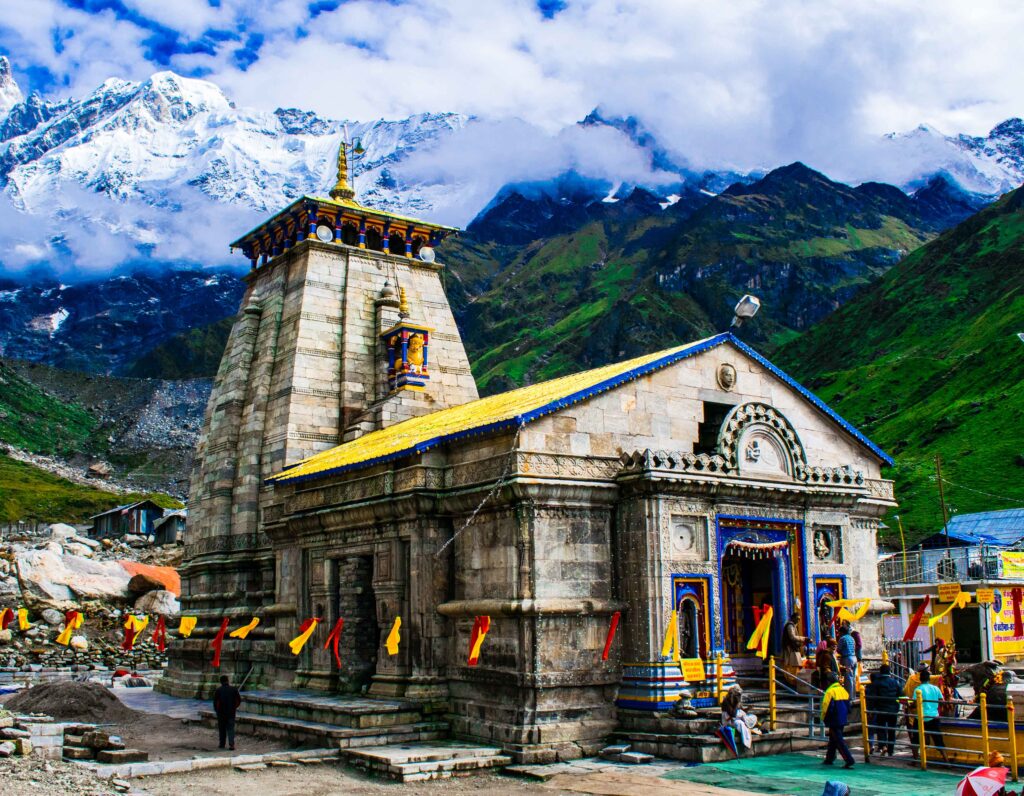
4. Badrinath – The Temple of Lord Vishnu
Location: Chamoli district, Uttarakhand
Altitude: 3,133 meters above sea level
Deity: Lord Vishnu (as Badrinarayan)
Badrinath is the final and most visited of the four Dhams. The temple is dedicated to Lord Vishnu in his form as Badrinarayan, seated in a meditative pose. It is believed that the place was chosen by Lord Vishnu himself for penance.
The temple is located on the banks of the Alaknanda River and is surrounded by the Nar and Narayan mountains.
Key Highlights:
- Tapt Kund: A hot sulfur spring where pilgrims bathe before entering the temple.
- Brahma Kapal: A site on the riverbank where rituals for ancestors are performed.
- Mana Village: The last inhabited village before the Tibet border, home to the legendary sage Vyasa’s cave.
- Vyas Gufa: Where Veda Vyasa is said to have composed the Mahabharata.
- Badrinath to Vasundhara Falls: A scenic 2-kilometer trek through lush forests.
Spiritual Significance: Visiting Badrinath completes the Char Dham Yatra and is believed to bring divine blessings, peace, and liberation.
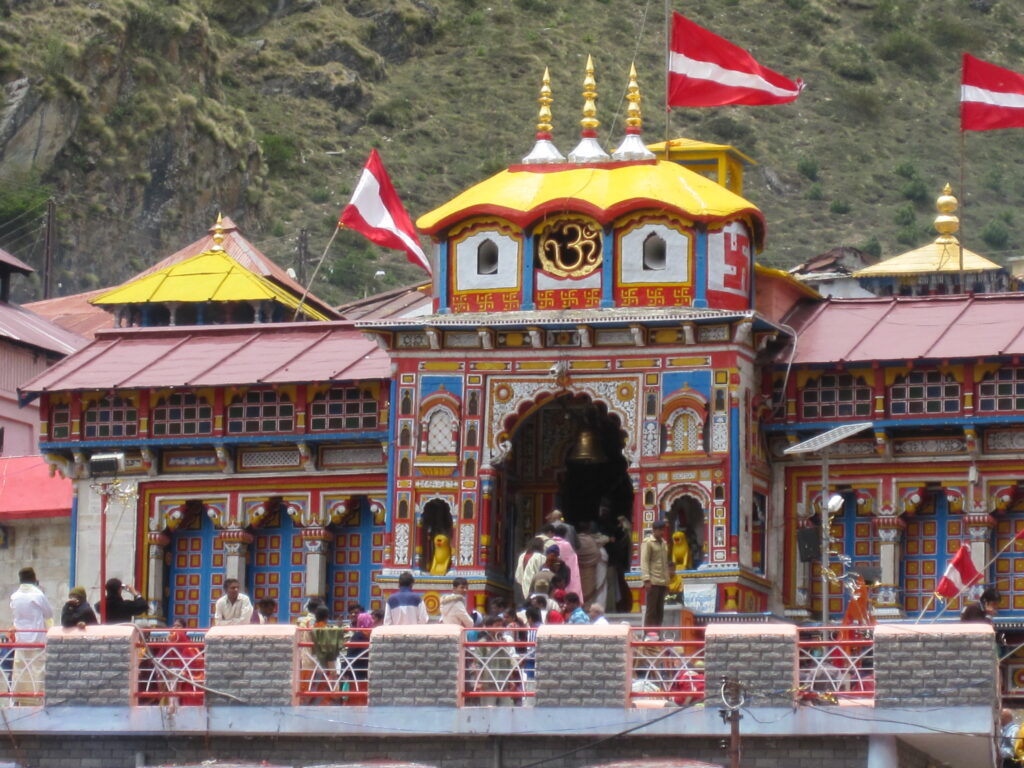
Best Time to Visit the Char Dham
The Char Dham temples are only open for part of the year due to extreme weather conditions in the Himalayas. The exact opening and closing dates vary each year based on religious rituals and weather, but the general window is:
- Opening: Late April to early May
- Closing: October to early November
The best time to visit is during two main seasons:
1. Summer (May to June)
- Weather is pleasant, with temperatures ranging from 10°C to 20°C.
- Skies are clear, offering stunning views of the mountains.
- Ideal for trekking and darshan.
- Peak pilgrimage season — expect large crowds.
2. Autumn (September to October)
- Post-monsoon freshness with clean air and lush greenery.
- Fewer crowds compared to summer.
- Stable weather, making travel safer.
- Good visibility and comfortable temperatures.
Avoid:
- Monsoon (July to mid-September): Heavy rainfall increases the risk of landslides and roadblocks.
- Winter (November to April): All temples are closed, and the region is covered in snow.
Booking your Char Dham Yatra package during the shoulder months (late May or September) can help you avoid the rush while enjoying favorable weather.

How to Reach the Char Dham
The journey typically begins in Haridwar or Rishikesh, both well-connected by rail, road, and air to major cities.
By Air
- The nearest airport is Jolly Grant Airport in Dehradun (~240 km from Haridwar).
- Flights are available from Delhi, Mumbai, and other major cities.
- From the airport, you can take a taxi or join a package that includes road transport.
By Train
- Haridwar Junction and Rishikesh Railway Station are the main railheads.
- Direct trains from Delhi, Mumbai, Kolkata, and Chennai connect to these stations.
- Most Char Dham tour packages include pickup from these stations.
By Road
- Well-maintained highways connect Delhi, Chandigarh, and other cities to Haridwar and Rishikesh.
- State-run and private buses operate regularly.
- Self-drive is possible, but mountain roads can be challenging for inexperienced drivers.
Helicopter Services
- Helicopter flights are available for Kedarnath and Badrinath, reducing travel time significantly.
- Operators offer one-way or round-trip services from Dehradun, Phata, and Sonprayag.
- Ideal for elderly pilgrims or those with limited time.

Where to Stay During the Char Dham Yatra
Accommodation options range from basic guesthouses to luxury hotels, depending on the location and package type.
Yamunotri
- Limited options in Hanuman Chatti and Janki Chatti.
- Basic lodges and dharamshalas (pilgrim rest houses).
- Some packages include overnight stays in Uttarkashi.
Gangotri
- A variety of hotels and guesthouses in Gangotri town.
- Options range from budget to mid-range.
- Advance booking recommended during peak season.
Kedarnath
- Very limited accommodation near the temple.
- Most pilgrims stay in Gaurikund or Sonprayag.
- Tented camps and lodges are available.
- Helicopter packages often include stays in nearby towns.
Badrinath
- Wide range of hotels, from budget to luxury.
- Popular areas: Badrinath town, Pipalkoti, and Joshimath.
- Many Char Dham Yatra packages include comfortable stays with meals.
Pro Tip: Always carry warm clothing, as nights can be extremely cold even in summer.

When Are the Char Dham Temples Open and Closed?
The Char Dham temples follow a seasonal schedule due to the harsh Himalayan climate.
- Open: Typically from late April or early May, after the Uttarayana period.
- Closed: Around October or early November, before the onset of heavy snowfall.
The closing ceremony, known as Bhoomi Poojan or Doli Utsav, involves carrying the deities from the main temples to their winter abodes:
- Yamunotri: Deity moved to Kharsali Village.
- Gangotri: Deity moved to Giri Bhavan in Uttarkashi.
- Kedarnath: Deity moved to Ukhimath.
- Badrinath: Deity moved to Badrinath Temple in Joshimath.
During the closed months, the temples remain inaccessible, and the region is not suitable for travel.
What to Pack for the Char Dham Yatra
Packing wisely is crucial for a comfortable and safe journey. Here’s a checklist:
Clothing
- Warm jackets, thermals, and windproof layers
- Woolen caps, gloves, and mufflers
- Comfortable trekking pants and shirts
- Raincoat or poncho
Footwear
- Sturdy, waterproof trekking shoes with good grip
- Extra pairs of socks
Essentials
- Government-issued ID proof
- Medical certificate (for senior citizens)
- Power bank and torch
- Reusable water bottle
- Snacks and energy bars
Health & Safety
- First-aid kit with painkillers, motion sickness tablets, and antiseptics
- Altitude sickness medication (consult doctor)
- Hand sanitizer and face masks
- Sunscreen and sunglasses
Spiritual Items
- Prayer beads
- Small idol or picture of your deity
- Offerings (flowers, incense)
Most Char Dham tour packages provide a detailed packing list based on the itinerary.
Safety Tips for the Char Dham Yatra
- Acclimatize Gradually: Spend a day in Rishikesh or Haridwar to adjust to the altitude.
- Stay Hydrated: Drink plenty of water to avoid dehydration and altitude sickness.
- Avoid Alcohol and Smoking: These can worsen altitude effects.
- Travel with a Guide: Especially if you’re unfamiliar with the terrain.
- Follow Local Advice: Heed warnings about weather and road conditions.
- Carry Emergency Contacts: Save local helpline numbers and your tour operator’s details.
- Respect Nature: Avoid littering and follow eco-friendly practices.
List of Must-Visit Places on the Char Dham Route
Beyond the four main temples, the journey includes several spiritually and naturally significant spots:
- Guptkashi – Known as “Kashi of the Mountains,” with ancient Shiva temples.
- Sonprayag – Confluence of Mandakini and Basuki rivers; gateway to Kedarnath.
- Chorabari Tal – Glacial lake near Kedarnath with breathtaking views.
- Mana Village – Last Indian village before Tibet; home to Vyas Gufa.
- Vasundhara Falls – Beautiful waterfall near Badrinath.
- Narsingh Temple – Ancient temple near Badrinath dedicated to Lord Narasimha.
- Atri Kund – Hot water spring on the way to Yamunotri.
- Pandava Gufa – Cave in Gangotri linked to the Mahabharata.
Including these in your Char Dham Yatra package enriches the experience.

Frequently Asked Questions (FAQ)
What is included in a Char Dham Yatra package?
Most packages include:
Transportation (bus, taxi, or helicopter)
Accommodation (hotels or guesthouses)
Meals (breakfast, lunch, dinner)
Entry permits and temple darshan arrangements
Guide services
Emergency support
How long does the Char Dham Yatra take?
Typically 10 to 16 days, depending on the pace and mode of travel.
Is the Char Dham Yatra suitable for senior citizens?
Yes, with proper planning. Many packages offer helicopter services and comfortable stays to accommodate older pilgrims.
Can I do the yatra with children?
Yes, but ensure they are physically fit. Family-friendly packages often include rest stops and child-friendly meals.
Do I need to register for the yatra?
Yes, all pilgrims must register online through the official Uttarakhand tourism website. Your package provider usually assists with this.
What documents are required?
Government-issued photo ID (Aadhaar, passport, etc.)
Medical certificate (for senior citizens)
Registration confirmation
Are there medical facilities on the route?
Yes, basic medical camps are set up by the government and tour operators. Carry your own medications.
Can I customize my Char Dham tour package?
Yes, many operators offer customizable itineraries based on your time, budget, and preferences.
What is the average cost of a Char Dham Yatra package?
Budget: ₹25,000 – ₹40,000 per person
Deluxe: ₹40,000 – ₹70,000 per person
Luxury: ₹70,000+ per person (includes helicopter rides)
Is food included in the package?
Most packages include vegetarian meals. Special dietary needs can often be accommodated with prior notice.
What happens if there’s a weather disruption?
Reputable operators provide alternative routes or reschedule the trip. Travel insurance is recommended.
Can I visit the Dhams independently?
Yes, but a package ensures safety, convenience, and better access to permits and accommodations.
Are there ATM and mobile network facilities?
ATMs are available in major towns like Rishikesh, Uttarkashi, and Joshimath. Mobile networks (BSNL, Airtel) work in most areas, but coverage can be patchy.
What is the significance of completing all four Dhams?
It is believed to purify the soul, fulfill vows, and bring the blessings of the divine for a peaceful life and liberation.
How can I book a reliable Char Dham Yatra package?
Book early to secure the best rates and availability.rinath guide your soul towards enlightenment. May your yatra be blessed and filled with peace and joy.


